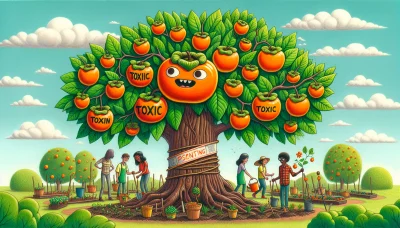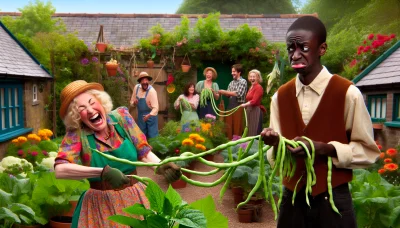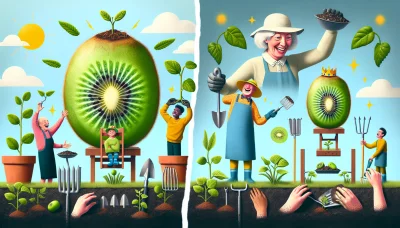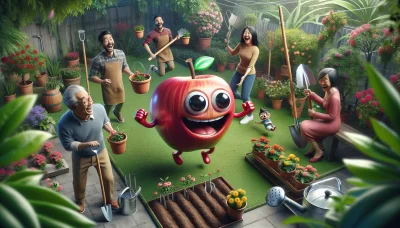Green beans raw Quiz
Test Your Knowledge
Question of
The Nutritional Benefits of Raw Green Beans
Raw green beans are a powerhouse of nutrition, offering a wealth of health benefits to those who choose to incorporate them into their diet. Packed with essential vitamins and minerals, these crunchy vegetables are an excellent source of Vitamin C, dietary fiber, folate, and Vitamin K. Consuming green beans in their raw state ensures that you get the maximum amount of nutrients, as cooking can sometimes reduce their vitamin content. Additionally, the high fiber content in raw green beans can aid in digestion and help maintain a healthy weight by promoting a feeling of fullness. The antioxidants present in green beans, such as flavonoids and carotenoids, contribute to reducing the risk of chronic diseases and support overall health. Including raw green beans in your diet is a simple yet effective way to boost your intake of essential nutrients and enjoy their numerous health benefits.
How to Grow Green Beans in Your Garden
Growing green beans in your garden can be a rewarding and delicious endeavor. Whether you're a seasoned gardener or a beginner, green beans are a great choice due to their ease of care and high yield. This guide will walk you through the steps to successfully plant, grow, and harvest green beans.
- Choose the Right Variety: Decide between bush beans and pole beans based on your space and support structure.
- Prepare the Soil: Ensure your garden bed has rich, well-draining soil with a pH between 6.0 and 7.0. Add compost to enrich poor soil.
- Plant Seeds: After the last frost, plant seeds 1 inch deep and 2 inches apart. If planting rows, keep them 18 to 24 inches apart.
- Water Regularly: Keep the soil moist, especially when the plants are flowering and developing pods.
- Provide Support: For pole beans, set up trellises or stakes for the vines to climb.
- Monitor for Pests: Keep an eye out for common pests like bean beetles and manage them promptly.
- Harvest: Once the beans feel firm and are easily snapped, they're ready to harvest. Pick them regularly to encourage more production.
Pest Management for Green Beans
Green beans, a staple in many gardens, can be susceptible to a variety of pests, including aphids, spider mites, and Mexican bean beetles. These pests not only damage the leaves and stems but can also significantly reduce crop yields. Fortunately, there are natural methods to protect green beans from these common pests. Introducing beneficial insects such as ladybugs and lacewings can help control aphid populations, while neem oil sprays are effective against spider mites. Handpicking and removing Mexican bean beetles and their larvae from plants can also reduce damage without the need for chemical pesticides.
- Encourage beneficial insects by planting companion plants that attract them.
- Apply neem oil spray in the early morning or late evening to avoid harming beneficial insects.
- Regularly inspect plants for pests and manually remove them when possible.
- Maintain healthy soil to strengthen plant defenses against pests.
- Use floating row covers to physically block pests from reaching the plants.
- Rotate crops each year to prevent pest buildup in the soil.
Harvesting and Storing Raw Green Beans
To ensure that green beans remain fresh from garden to table, it's crucial to follow best practices for harvesting and storage. Harvesting should be done early in the morning when temperatures are cool to help retain the beans' natural crispness and moisture. It's important to pick the beans gently to avoid damaging the plant or the beans themselves. Look for beans that are firm, without visible bulges, as this indicates they are at the perfect stage for picking.
Steps for Proper Storage
- After harvesting, wash the green beans in cool water to remove any dirt or debris.
- Pat the beans dry with a clean cloth or let them air dry completely to prevent any mold growth.
- Trim the ends of the beans if desired, though this can also be done before use.
- Place the green beans in a breathable bag or container. Avoid sealing them tightly as this can promote moisture buildup.
- Store the beans in the crisper drawer of your refrigerator. This will help maintain their freshness for up to a week.
- For longer storage, green beans can be blanched and then frozen. This process preserves their texture and flavor for several months.
Innovative Recipes for Raw Green Beans
Raw green beans, with their crisp texture and fresh flavor, offer a versatile ingredient for a variety of innovative dishes. Moving beyond traditional cooking methods opens up a world of culinary creativity, allowing these vibrant veggies to shine in salads, dips, and more. Explore the potential of raw green beans with these simple yet inventive recipe ideas.
- Green Bean and Cherry Tomato Salad
- Raw Green Bean Salsa
- Green Bean Almondine Tartare
- Spicy Green Bean and Mango Slaw
- Green Bean Gazpacho
The Environmental Impact of Growing Green Beans
Green beans, a popular and nutritious vegetable, have various environmental impacts associated with their cultivation. The process of growing green beans requires water, land, and often the use of fertilizers and pesticides, which can lead to soil degradation, water pollution, and harm to local ecosystems. However, sustainable farming practices, such as crop rotation, organic farming, and the use of natural pest control, can significantly minimize these negative impacts. By implementing such practices, farmers can reduce the environmental footprint of green bean cultivation, promoting healthier ecosystems and contributing to the sustainability of agriculture.
FAQs About Growing and Consuming Raw Green Beans
Below is a list of frequently asked questions regarding the cultivation, nutritional benefits, and safety of consuming raw green beans. Whether you're a gardening enthusiast or a health-conscious eater, these insights aim to provide valuable information about raw green beans.
-
Can I eat green beans raw?
Yes, you can eat green beans raw. However, it is important to wash them thoroughly before consumption to remove any pesticides or bacteria. Some people may find them difficult to digest raw, so listen to your body.
-
How do I grow green beans in my garden?
Green beans thrive in well-drained soil with plenty of sunlight. Plant the seeds directly in the ground after the last frost, ensuring they are about 2 inches apart and 1 inch deep. Regular watering and occasional fertilizing will help them grow healthy.
-
What are the nutritional benefits of green beans?
Green beans are low in calories and high in essential nutrients, including vitamin C, dietary fiber, folate, and vitamin K. They are a healthy addition to any diet.
-
How do I store raw green beans?
To preserve their freshness, store raw green beans in a plastic bag in the refrigerator. They typically last about a week. For longer storage, blanching and freezing is an effective method.
-
Are there any risks associated with eating raw green beans?
Raw green beans contain lectins, which can cause digestive issues for some people if consumed in large quantities. Cooking green beans significantly reduces these lectins, making them easier to digest for most people.












